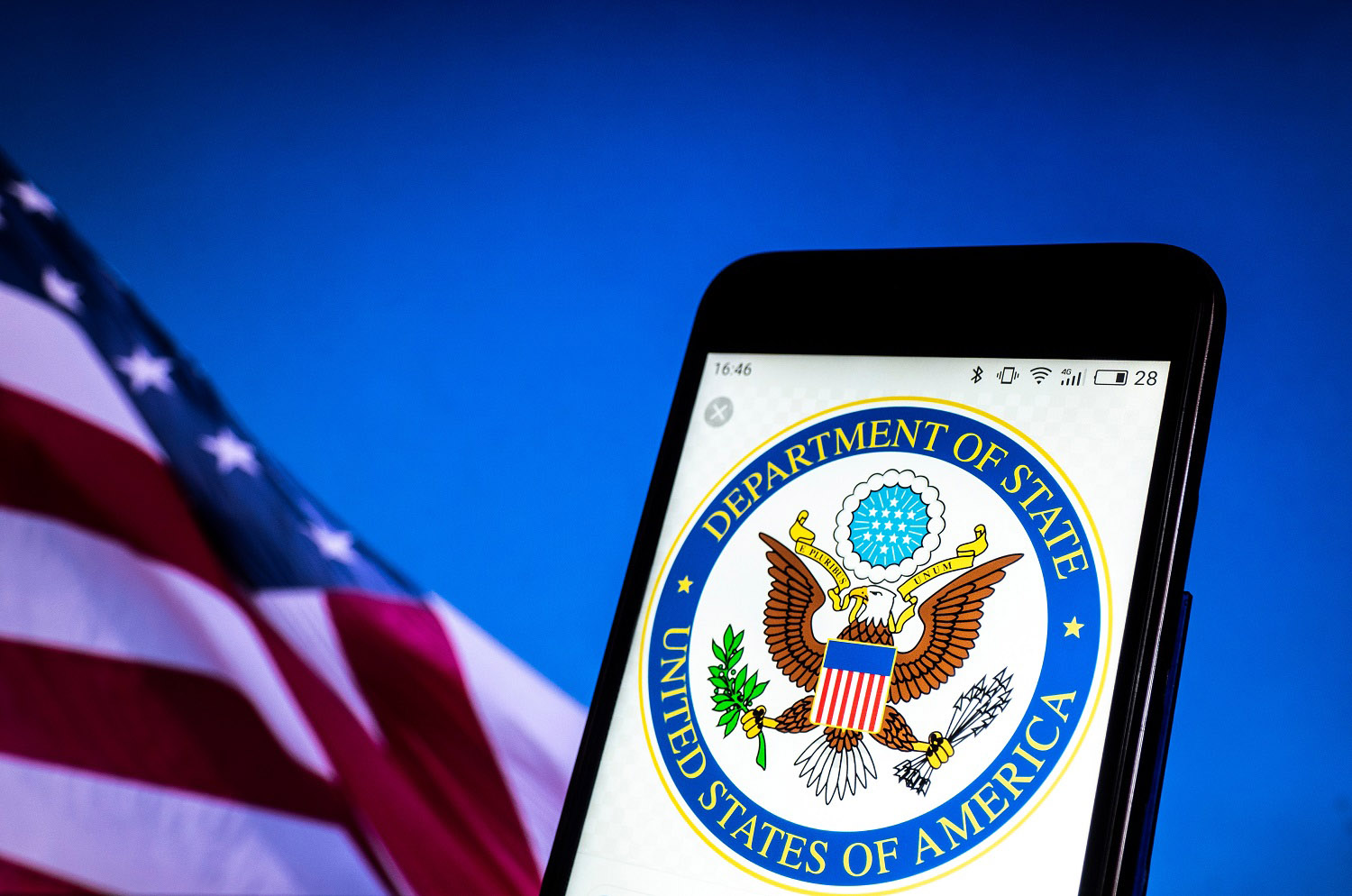It has been a rough year for the State Department’s Population, Refugees, and Migration bureau—colloquially known as “PRM.” Speculation about PRM’s future has swirled following the Trump administration’s moves to curtail refugee admissions, and a proposal by the White House Domestic Policy Council to eliminate the bureau and distribute its components to the Department of Homeland Security (resettlement and migration policy) and USAID (assistance funding). Most observers agree that resettlement and migration functions should stay at State, but the question of whether assistance funds should shift to AID has gotten more traction. These two matters are likely linked—stripping PRM of its program funds would leave it greatly diminished and far more vulnerable to a DHS takeover. But the issue of program coherence nonethless remains an important one to address on the merits.
The office I used to lead—USAID’s Office of US Foreign Disaster Assistance—would be a major beneficiary of such a change. Shifting PRM’s assistance portfolio to USAID would roughly triple OFDA’s budget, adding nearly $3 billion a year to its existing $1.5 billion appropriation.
So it may be surprising that I have deep reservations about this idea. Why? I fear that diminishing or removing an empowered humanitarian voice from the State Department weakens humanitarian priorities in US policy writ large. And I believe there are ways to address legitimate concerns about the existing structure without dismantling PRM. Let’s dive in.
First, it is important to acknowledge that there are downsides to the current setup. In an era that demands greater coherence from the humanitarian system, US humanitarian assistance remains split across three offices—two at USAID (OFDA and Food for Peace) and State/PRM. Each has a different focus—food, refugees, and everything that isn’t food or refugees. In 2017, these are no longer sensible dividing lines for humanitarian assistance. Food and non-food aid must be mutually reinforcing in order to be effective, and the assistance needs of refugees and non-refugees are often broadly similar. Moreover, these divisions mean each office funds programs in different ways, with its own redundant grant procedures, reporting requirements, and programming tactics (more on this below).
The argument for folding PRM’s funding into USAID is primarily about streamlining this outdated assistance model. Doing so (along with an anticipated merger of OFDA and FFP within USAID) would consolidate all US humanitarian funding into a single bureau at AID. This could lend greater alignment to US humanitarian assistance strategy, enable the US to speak with one voice (rather than three) in UN agency governing bodies, and harmonize the very different funding approaches that USAID and State/PRM now employ.
If that were the end of the story, I could wholeheartedly support such a move. But it isn’t.
For humanitarian action is not just about aid—it is also about protection. This requires diplomatic and policy engagement—areas where the State Department plays a key role, and often carries a lot more weight than USAID. Somalis fleeing into Kenya, South Sudanese fleeing into Uganda, Syrians fleeing into Jordan, or Burmese Rohingya fleeing into Bangladesh don’t just need food, shelter, water, and health assistance. They also need legal protection, respect for their human rights, and access to job markets and education systems. Under international law, they need a process in place for making asylum claims, and for ensuring they will not be forced back to life-threatening conditions in their home country (a legal principle known as non-refoulement).
These are, fundamentally, foreign policy matters. They are best pursued with refugee-hosting governments through diplomatic channels. A message on non-refoulement carries more weight coming from the ambassador than from a USAID mission director. PRM keeps State Department leadership attuned to these issues, and ensures they are raised diplomatically when needed. PRM’s stature within the Department—and, in turn, an ambassador’s ability to negotiate refugee protection with a host government—is heavily tied to PRM’s program budget. It is a truism in government—but an accurate one—that controlling resources gives leverage at the policy table.
Leaving PRM’s policy functions in State while moving its programming to AID is a recipe for marginalizing this aspect of humanitarian action. Inside State, PRM would get far less traction because—when stripped of its $3 billion budget—it would be seen (accurately) as a much weaker player. Leverage with host governments would be diminished as well, because PRM’s policy engagement would no longer be backed up by substantial program funds.
And weakening PRM doesn’t just weaken US refugee policy—it weakens US humanitarian policy. In the interagency policy process, having strong and empowered humanitarian voices at both State and AID helps amplify humanitarian perspectives in deliberations. And PRM is an important go-to for the secretary of state; on humanitarian matters, PRM typically holds more sway with the secretary than anyone at AID outside of the administrator. Marginalizing this channel will permanently erode the priority of the humanitarian concerns reaching the secretary’s desk—and that, in turn, will send signals throughout the rest of the Department.
So, neither the status quo bifurcation, nor a full merger at AID, is an appealing option. What to do?
There is a third option—addressing the incoherence of the current structure while ensuring an empowered humanitarian voice remains within both State and AID. Here are some ways that could work:
-
Unify Field Operations: The fragmentation of US humanitarian assistance is most overt at field level, where NGO and UN partners potentially have three US humanitarian representatives to engage—the OFDA team, the FFP representative, and the PRM refugee coordinator. More often than not, each of these folks are based out of different embassies in the region, and report back to different masters in Washington. All should be merged into unified USG regional humanitarian teams, managed by USAID, a structure that should be mirrored at country level as well. PRM field staff could be seconded onto these teams while maintaining an oversight and reporting line to PRM/DC—a common practice between other interagency partners and USAID. This consolidation would both ensure the US government presents a more coherent face toward its implementing partners, and facilitate more efficient and integrated programming. USAID appears poised to get the ball rolling on this by consolidating its OFDA and FFP field teams—a good first step.
-
Consolidate NGO Funding Tools: OFDA, FFP, and PRM all maintain their own distinct funding processes, with distinct proposal solicitations, grant templates, and reporting requirements. This means that NGO partners seeking to implement, say, a food and water project for a blended refugee and non-refugee population must do so through three different grant processes and submit three different reports on three different timelines and three different formats (and probably a few more for the US-supported cofinancing they get through UN intermediaries). These systems should be harmonized into a single, consolidated NGO proposal and reporting process, through which USG implementing partners can apply for integrated program funding across both USAID and State.
-
Harmonize Program Approaches: I believe OFDA’s programming approach should be the principal model for US humanitarian assistance. Through its famous “DART” teams and excellent field operators, OFDA takes a hands-on approach that delivers impact, influence, and high visibility for the USG. This model provides robust support to both NGO and UN partners, based on which type of partner is best positioned to deliver results. It is swift and operational, deploying large teams to new disasters in a matter of hours or days. It ensures strong accountability and oversight, as it enables USG personnel to engage with and monitor implementing partners directly at field level, in real time. And OFDA’s model sets funding strategy in the field, based on partner delivery capacity and comparative advantages of UN and NGO organizations. PRM’s programming model instead relies heavily on the multilateral system, routing most of its funding through global or regional-level UN appeals.
For the reasons outlined earlier, I do believe it is important that PRM continue to manage refugee assistance programming—but that it shift to a more OFDA-like model for doing so. If field teams and funding tools were harmonized as proposed above, PRM could begin applying an OFDA-like field-centric model in the refugee space as well, which would enable tighter oversight. And it would ensure more consistent programming interventions across refugee and non-refugee programs as well.
-
Share Oversight of Multilateral Partners: The USG needs cohesive engagement with the multilateral system not just at the field level, but at the global level as well. At present PRM leads on governance of UNHCR, the International Organization for Migration, and the Red Cross; FFP leads on governance of the World Food Programme; and OFDA leads on governance of the Office for the Coordination of Humanitarian Affairs. There is often a significant degree of turf protection in these roles, despite the fact that all three USG offices have significant equities at play with all of these agencies. This makes for siloed governance and contributes to UN interagency dysfunction. Going forward, the USAID administrator (as the government’s senior-most humanitarian official) should have the lead on overall USG governance of the major multilateral humanitarian agencies, with the policy outreach, day-to-day relationship management, and support functions continuing to reside where they respectively sit in PRM and AID.
-
Merge the Funding Accounts: In FY 2010, OFDA and FFP began sharing resources from the International Disaster Assistance (IDA) account, which previously had exclusively funded OFDA. This started off contentiously, but over time the inter-office tension dissipated and gave way to new budget processes that significantly improved budget coordination. Sharing the account forced both offices to look more holistically at problem sets, and to consider budget trade-offs in terms of the greatest humanitarian impact rather than as zero-sum turf wars.
Right now, refugee aid is appropriated through the Migration and Refugee Assistance (MRA) account, fully distinct from the non-refugee assistance in IDA. But in practice, MRA funds non-refugee programs (through multilateral contributions to the Red Cross and International Organization for Migration) and IDA funds refugee support (through FFP’s refugee food aid programs). Yet because of the budget bifurcation, there is weak coordination of these interrelated programs between State and AID, and it is bureaucratically complex to fund holistic programs that encompass refugee and non-refugee elements. Funding most refugee aid through the IDA account, with PRM programming it, could take PRM-USAID coordination to the next level (some functions, like resettlement, would need to stay within MRA). Forcing both PRM and AID to share IDA would doubtless spur some initial tension. But over time it would yield a more engaged budget and strategy dialog and better complementarity between refugee and non-refugee programs. OMB could apportion a subset of the annual appropriation to PRM for refugee support and allocate the balance to AID, based on a joint budget review process between the two organizations.
Some of these steps may sound painful and onerous—but they are far less extreme than the step of folding PRM’s programming role completely into USAID. And they present a means of maintaining strong humanitarian perspectives and programs at the State Department, with robust resources, while dramatically improving the cohesion and effectiveness of US humanitarian assistance. Given the serious downsides to both the status quo and a full merger, this sort of blended approach could provide a viable way forward.
Disclaimer
CGD blog posts reflect the views of the authors, drawing on prior research and experience in their areas of expertise. CGD is a nonpartisan, independent organization and does not take institutional positions.
Image credit for social media/web: Social media image by United Nations Photo




